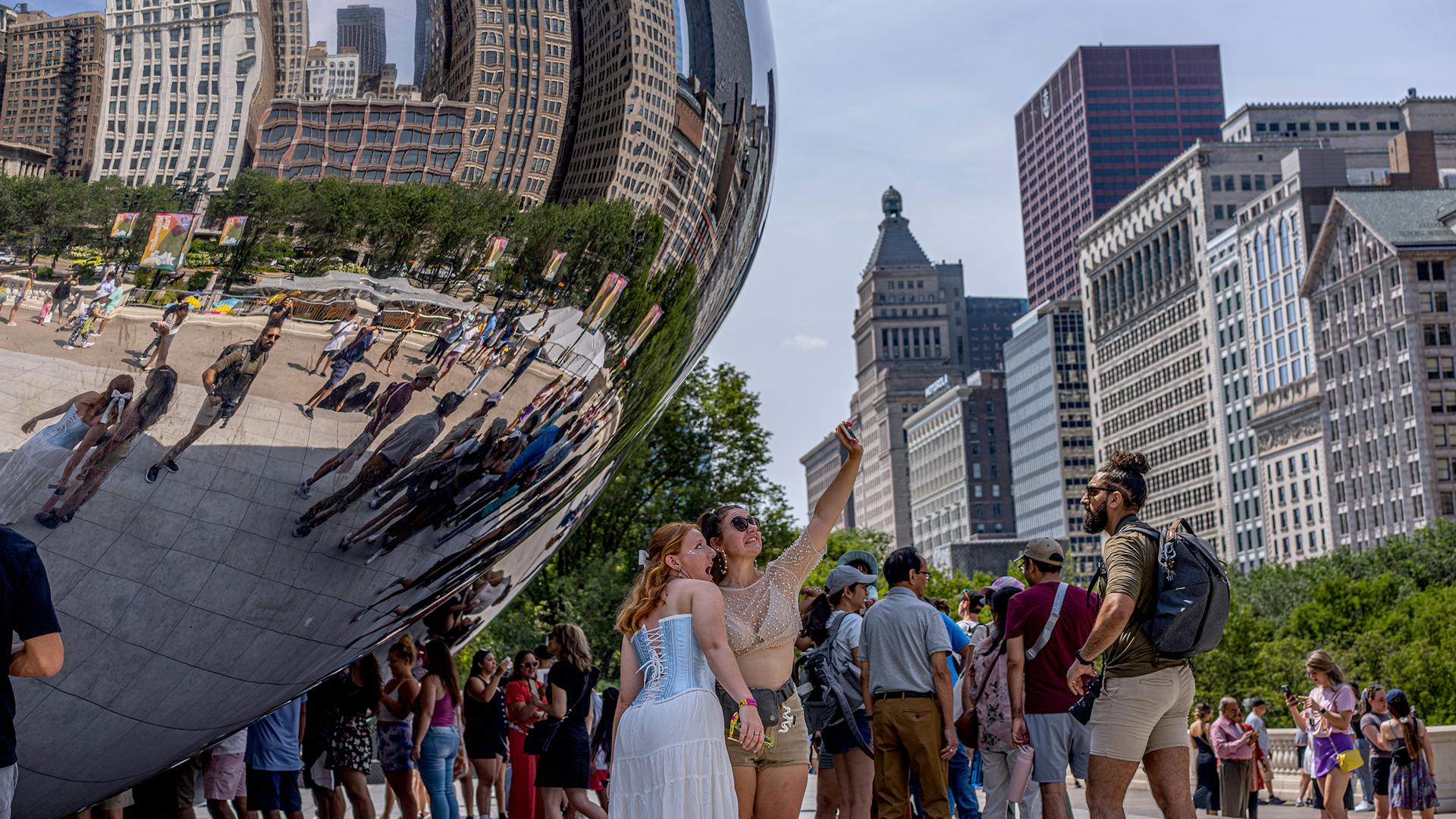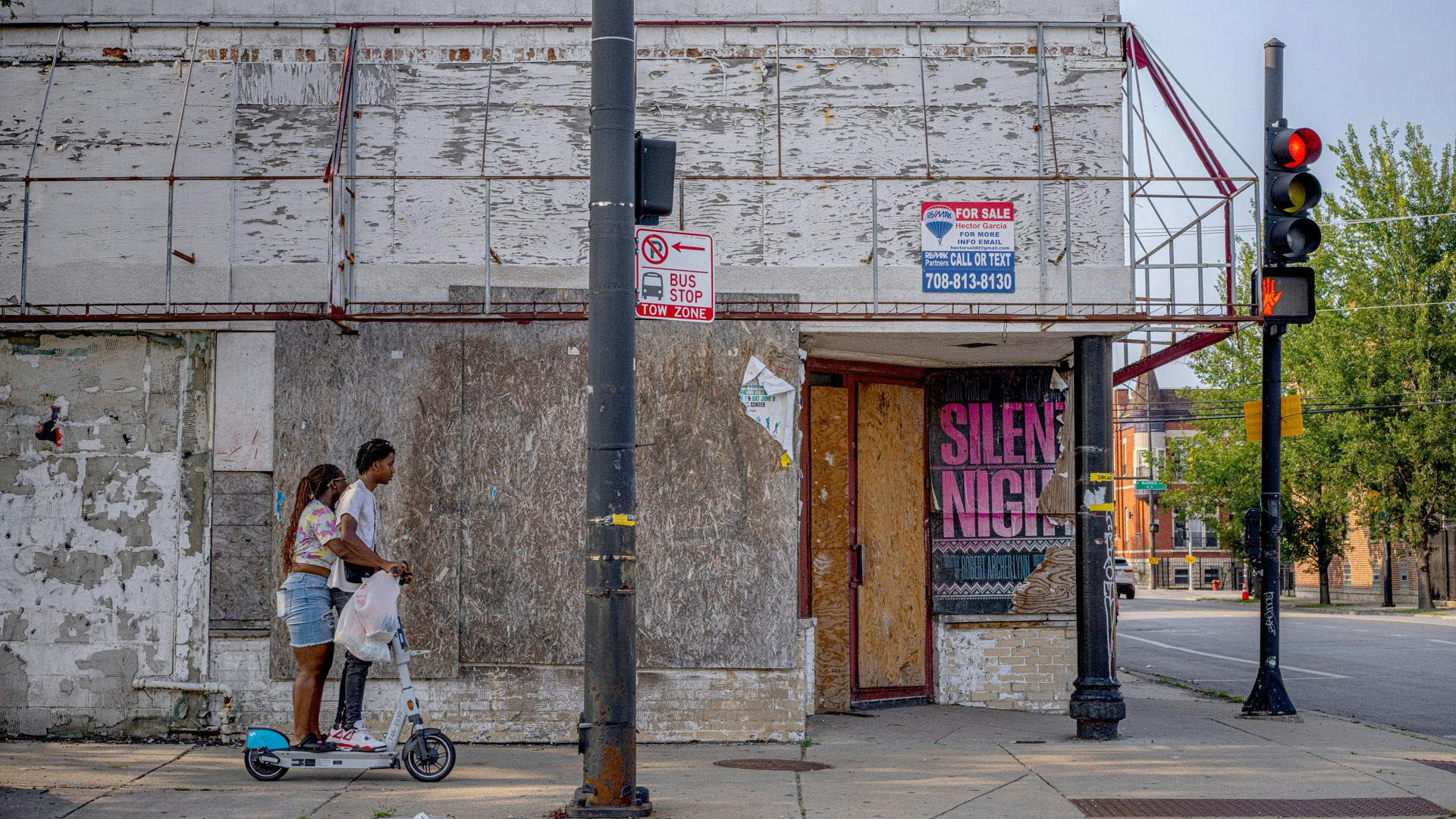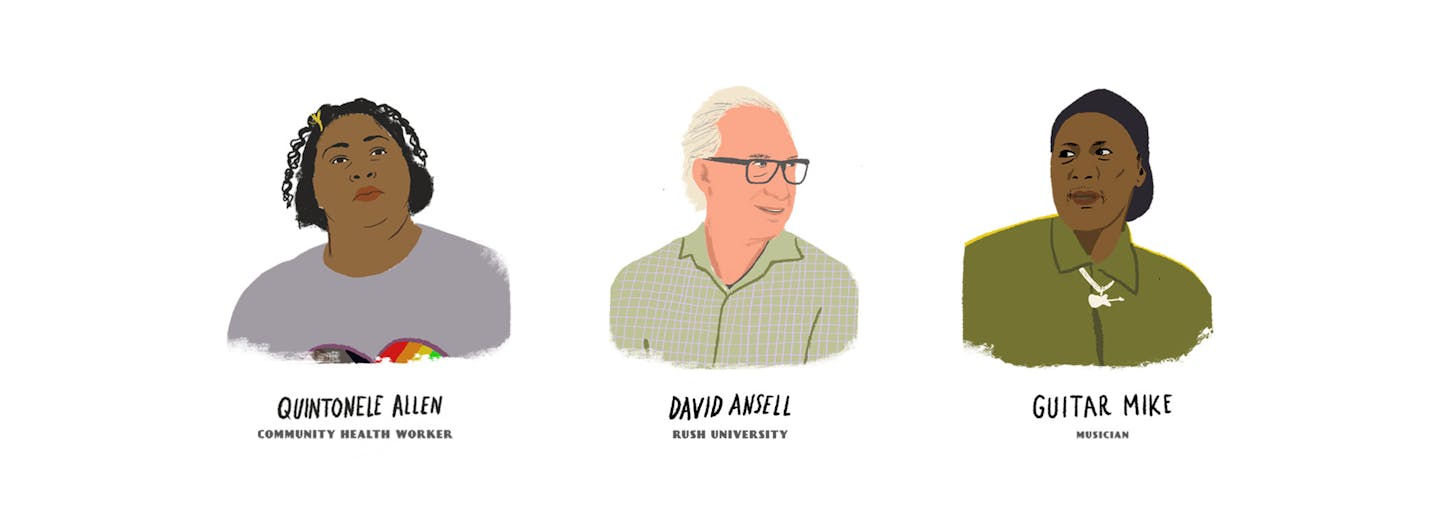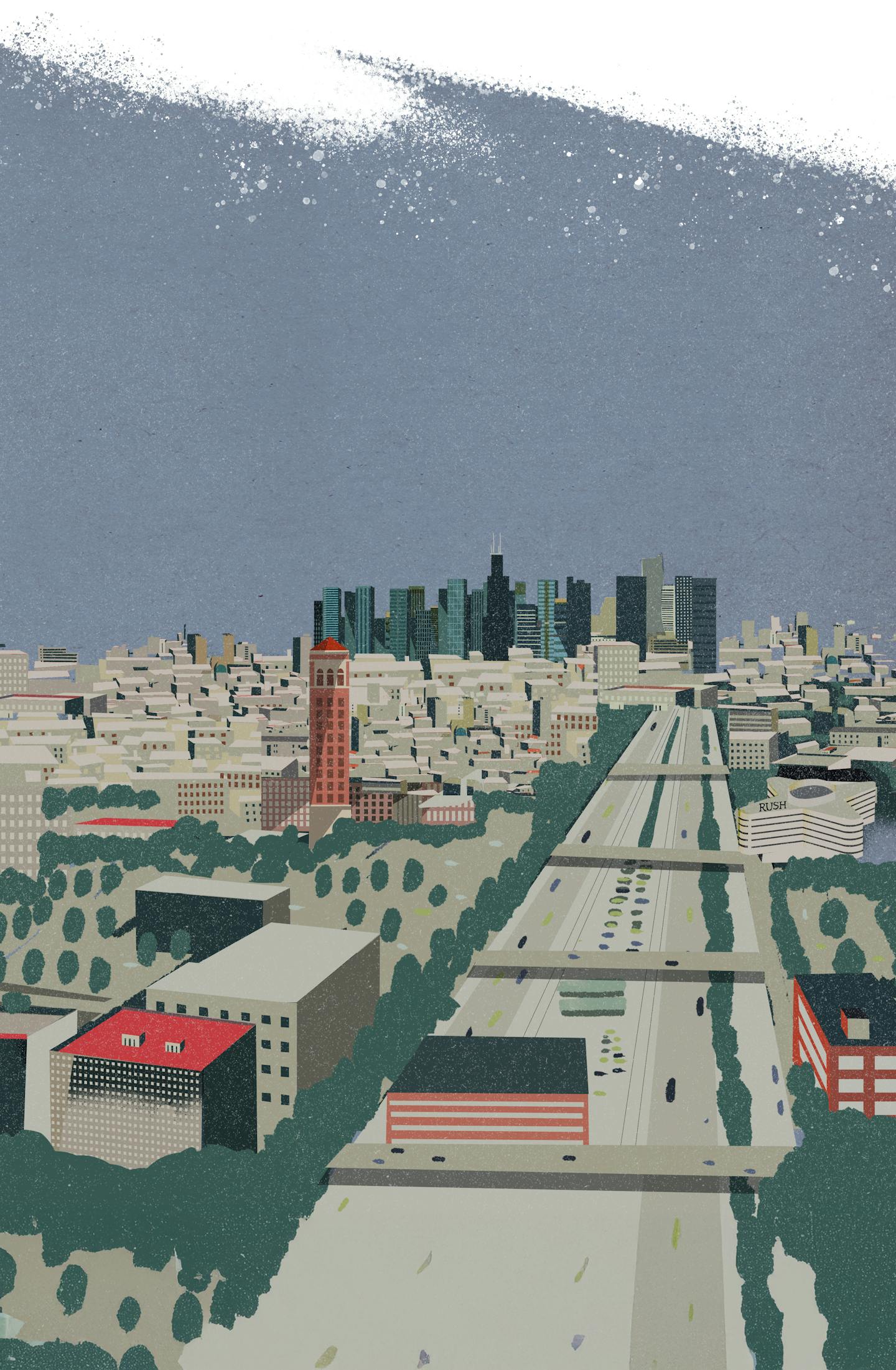Live. Magazine



Health System Strengthening
Changing healthcare from the bottom up: An introduction.
Seven stops down the blue line
Text by Goran Mijuk, photos by Ashley Gilbertson and Laurids Jensen, videos by Elia Lyssy and Laurids Jensen, illustrations by Lehel Kovacs.
Chicago’s elevated train line, which locals call the “El”, is a tourist hotspot, attracting thousands of visitors every day as its silver bullet coaches circle around the city’s shiny downtown with its impressive skyscrapers, lush parks, and splendid shops.
But just seven stops down the blue line to the west, the city shows a different face: higher levels of poverty and one of the lowest life expectancies across the United States, with a 16-year difference from downtown Chicago, where people can expect to live 85 years on average.


Anish Kapoor’s iconic sculpture “Cloud Gate” in downtown Chicago. Hundreds of thousands of tourists visit the artwork every year. It is located in Chicago’s affluent Loop community with its impressive skyline.
Known from films such as “The Blues Brothers” and loved by tourists from all over the world, the Chicago “El” train, as locals call the rapid transit system, connects the entire city, from the impressive inner-city Loop to its poorer outskirts.
Chicago’s West Side varies widely in demographics with sections characterized by closed shops and run-down buildings.
To change this situation, which has been smoldering for decades, David Ansell from Rush University System for Health has partnered with others to carve out a path that could bring lasting change to this district and to underserved regions in the United States as a whole.
Together with community, academic, and business partners, Ansell has launched a series of programs and business ventures and has set up a hospital laundry service aimed at closing what he calls “the death gap.” This also includes program E3 (Engage, Empower, Evaluate), which is sponsored by Novartis and aims at improving heart health in the city.
Health and Wealth Gap Chicago
Differences in Life expectancy, hypertension and poverty from the Bay Area to Garfield Park.
Source: Chicago Health Atlas, chicagohealthatlas.org

The goal of Ansell, who was Rush’s chief medical officer for more than a decade, is not to improve the medical profession per se, but to imbue medicine with a social component and rip down the structural barriers that keep millions from achieving positive health outcomes.
To get a better understanding of this approach, we followed Ansell, who now serves as Rush’s vice president of community health equity, and his team in Chicago to see how they are turning social medicine into a reality.
During our journey, we met with clinical social workers such as Therese Byrne from Rush as well as community health workers Quintonele Allen and Jasmine Martinez. We learned about the life of heart patients such as Michael Williams and Lula Jordan and met shooting victim Marcus Kelley, who opened his doors to tell us about his tragic experience.

We visited the Fillmore Linen Service and business incubator West Side United, and enjoyed Chicago’s vista from the original Sears Tower, the once throbbing economic heart of the city. We also watched a local baseball game organized by the city police and were able to see how many people in Chicago’s West Side depend on Rush’s food distribution program.
Finally, we talked to Binta Beard from the Novartis U.S. Foundation and Social Impact, to share her view.
Explore the full Chicago Story Series
Health System Strengthening
Prologue: Seven stops down the blue line
A journey in space and time.
Epilogue: A note of success
E3 is set to change Chicago.
→ Read the story










